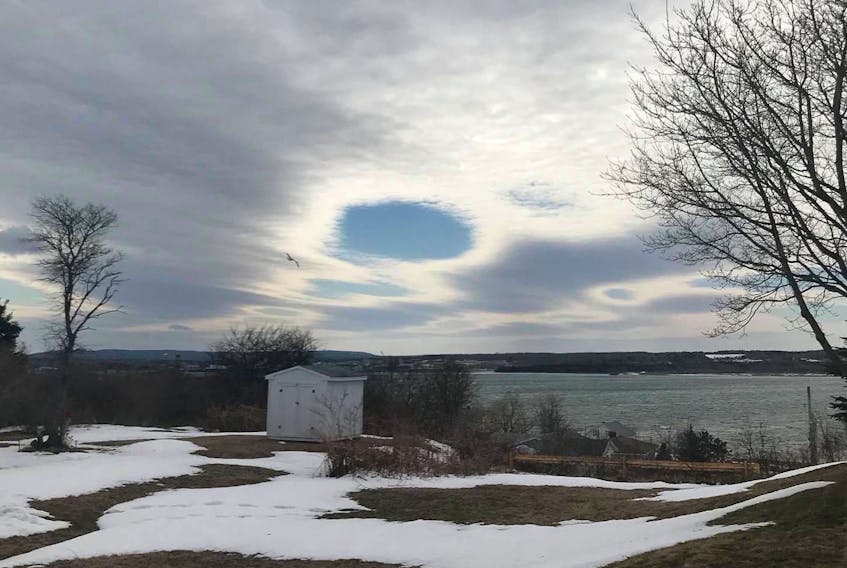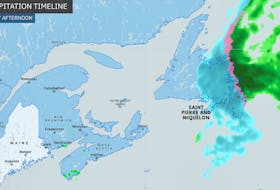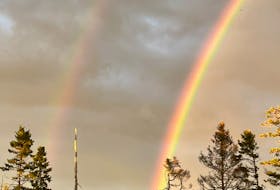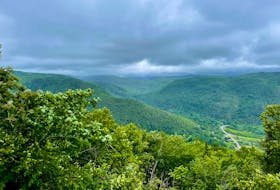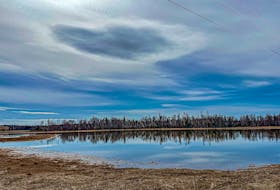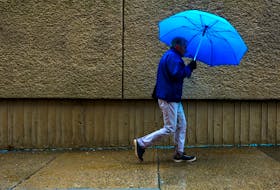I don’t spend a lot of time on Facebook during the weekend, but I like to check it a few times. When I did look this past weekend, I couldn’t believe my eyes. Not one, but several photos of a fairly unusual cloud formation. It appears that many people in the Sydney, N.S., area were looking up Saturday afternoon and noticed a huge hole in the clouds! More than one person described it by saying “it looks like someone punched a hole in the cloud”. Not only is that a great description, but it also names the cloud. The cloud is often referred to as a punch cloud, a hole-punch cloud or fallstreak hole.

A fallstreak, or punch hole, is a large circular gap that can appear in the clouds - most often in altocumulus clouds. That cloud layer can be composed of small water droplets that are below freezing: super-cooled water droplets. If ice crystals form in the layer of super-cooled droplets, they will grow rapidly and shrink or possibly evaporate the water droplets completely. This is known as the Bergeron process. Aircraft can trigger this process, too. Studies have shown that aircraft passing through these cloud layers can trigger the formation of the heavier ice crystals, which fall to earth and then leave the circular void in the blanket of clouds.
Depending on the amount of moisture in the air, one of two things can happen.
It can snow: Ice particles grow at the expense of the super-cooled water droplets and fall out as snow. The snow changes to rain on its way down to earth.
Or a hole remains in the sky: if the cloud layer is thin or if the water is not replenished, the snow leaves a hole in the cloud.
Scientists first reported observing hole-punch clouds in the 1940s. They often lead to false reports of UFOs or rocket launches.
Today’s weather fact
Lunar gardening?
Our ancestors believed the phase of the moon affects plant growth and that certain plants do better when the seeds are started during particular lunar phases.
Vegetables that bear crops above ground, as well as annual flowers, should be started during the light or waxing of the moon: anytime between the new moon and the full moon. The new moon was April 15.
- Want more weather information? Visit WeatherByDay.ca
- Have a weather question, photo or drawing to share with Cindy Day? Email [email protected]
Cindy Day is the chief meteorologist for SaltWire Network.

